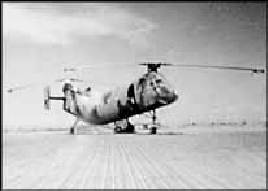

SOUTH VIETNAM
|
Sep. 3, 1966 By 1966, U.S. strength had grown to 385,000 personnel, bolstered by additional forces from South Korea, Australia, and New Zealand. Viet Cong successes were greatly diminished and their only significant victory was in March when their forces overran a Special Forces camp in the A Shau Valley. Because of heavy Viet Cong losses during the year, it was estimated that North Vietnam had to commit more than 58,000 of its regular troops to assume a greater share of the conflict. On Dec. 24, 1965, President Johnson declared a bombing halt over North Vietnam to try to persuade Hanoi to discuss a political settlement. It lasted until Jan. 30, 1966. This halt followed one of six days the preceding May. Hanoi responded to neither, but used the time to rebuild its strength, repair previous damage, and send more troops and supplies southward.
|
 MIKOYAN-GUREVICH MIG-21F "FISHBED" |
|

U.S. Army H-21 helicopter |
So, Rolling Thunder began again and U.S. aircrews not only had to attack the new targets, but also those they had already destroyed which had been rebuilt or repaired. On Sep. 3, 1966, North Vietnam sent up its MiG-21s in force for the first time from five air bases which had not previously been attacked because of U.S. policy. By the end of the year, Rolling Thunder had progressed northward, reaching the Hanoi area. "Steel Tiger" operations continued down the length of the Panhandle in 1966, with special emphasis upon the "Tiger Hound" area. Since most of the Communist truck traffic was at night, the USAF developed and began using special equipment to detect the nighttime traffic. On the Plain of Jars, the Pathet Lao advance gradually slowed due to the destruction of its supplies by airpower, and Laotian troops then counter-attacked. By Aug. 1966, they had advanced to within 45 miles of the North Vietnamese border. North Vietnam then sent thousands of its regular troops into the battle and once again the Laotians were forced to retreat. |
|
| ŠAvStop Online Magazine Contact Us Return To News |